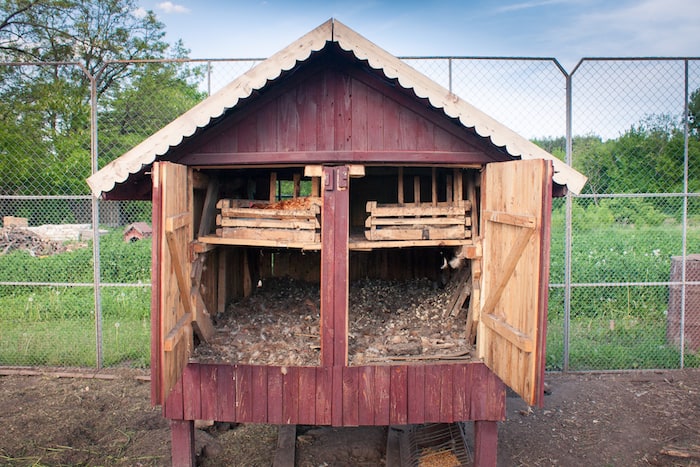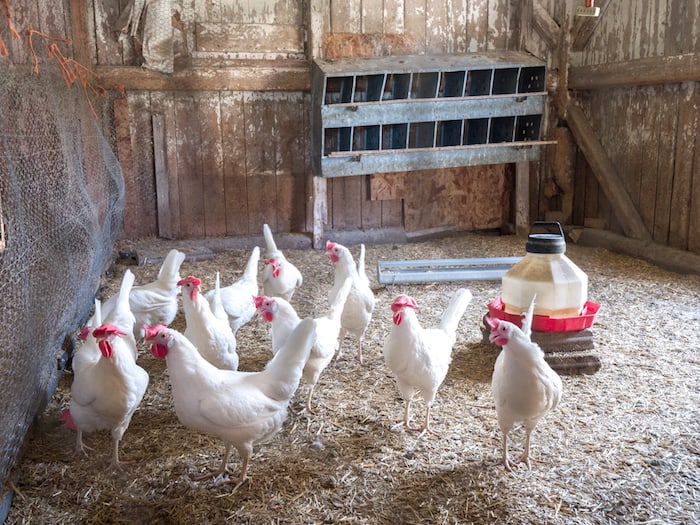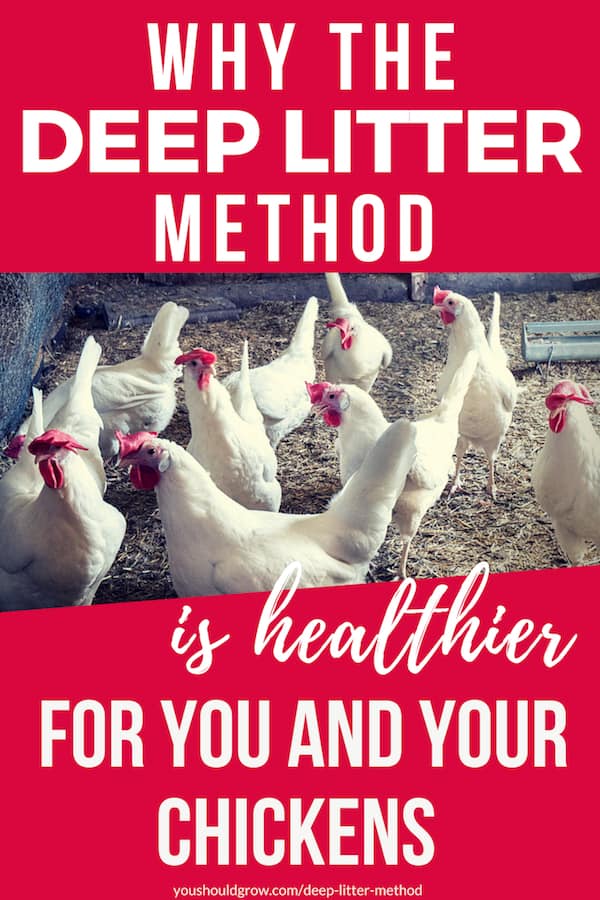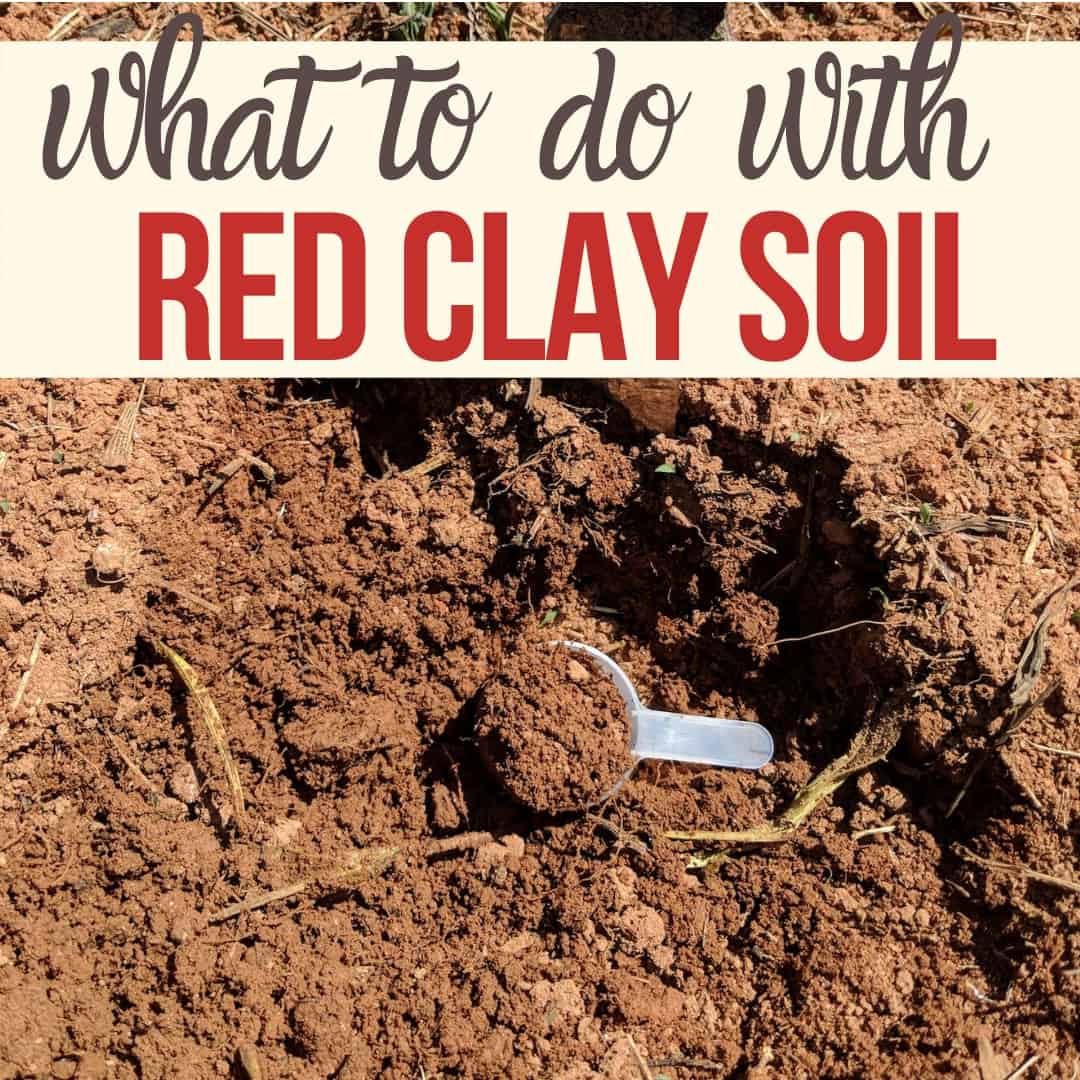Why The Deep Litter Method Is Healthier For You And Your Flock
As an Amazon Associate and member of other affiliate programs, I earn from qualifying purchases.
If you’re a parent of some backyard chickens, then I know you’ll appreciate the ease of using the deep litter method to keep their coop clean. In this article, I’ll tell you why the deep litter method is not only great for your birds, but also for you and your garden.

Why choose the deep litter method for chicken coops?
The deep litter method is a tried and true way to keep your coop clean without any extra work. It’s employed by many homesteaders and veterinarians like myself. I know it may seem counter-intuitive that cleaning your coop less often is actually healthier for you and your birds, but it truly is and I’ll explain why. This method for cleaning chicken coops is not only easier, but it takes advantage of natural decomposition to get rid of all the gross things that come along with backyard chickens.
But before we get into the basics of the deep litter method, let’s talk a little about coop sanitation.
- You don’t need a pristine coop. If you’re trying to have a picture perfect coop 24/7, then don’t put chickens in there. Chickens make a lot of mess.
- On the other hand, your chicken coop should also not stink to high heaven. You’ll know it’s time to add more litter to the coop when you start to notice an odor.
- This method works great, but you’ll have less success if your coop isn’t well ventilated. Proper ventilation of chicken coops is essential to the health of your birds.
How to keep your chicken coop clean using the deep litter method
I am a big fan of the deep litter method because you only need to get into your coop to perform a deep cleaning every 4-6 months. In between cleanings, you’ll simply place new bedding material every few days to weeks.
How often you add new material depends on how many chickens you have and how much of a mess they are making. But the idea is just to dump a few inches of fresh bedding on top of the droppings like a cat covering up their mess in a litter box. When you add fresh bedding, you absolutely must make sure you use enough to provide a fairly thick cover over all the droppings. You can’t add too much, but you can add too little.
How to clean your chicken coop
Using the deep litter system, you’ll only need to clean out your chicken coop every 4-6 months.
Step 1: Choose a day when the weather is nice and you’ve got your old dirty work clothes on to open up the coop and rake out all the bedding and droppings that have piled up. If you’ve been adding new litter often enough, this is honestly not as bad as it sounds. Do wear a mask to be safe and be especially mindful if your coop does not have good ventilation because it will get very dusty!

Step 2: With the coop emptied of bedding and any toys, feeders, or waterers (if you have them inside), whip out a scrub brush and some warm soapy water to clean all surfaces of the coop, then rinse and let dry. You’re not trying to sterilize the coop, you just want to clean up any droppings, spills, and whatnot. Let the coop air out and dry for a couple of hours.
Step 3: When the coop is dry, I like to sprinkle the corners and all nooks and crannies with diatomaceous earth. DE helps keep down fleas, mites, and other bugs in the coop. Why wait till you see them, right? You want a bit more than a light dusting in there. DE works by slicing the thin skin of soft skinned insects, but they need to be coated in it by walking through the powder.
Be careful of using too much DE, though. The particles will also slice up tender lung tissue, so you don’t want to use so much of it that you’re inhaling it. If you decide to treat your coop with DE, just use your best judgment to protect yourself and your birds from harm.
With the DE in place, it’s time to fill your coop back up with 3-4 inches of fresh bedding. You can also sprinkle any number of dried herbs in your coop bedding. My favorites are lavender, mint, lemon balm, and oregano.
It’s so satisfying to get to this point. I love watching the birds go in and enjoy their fresh clean coop.
Making chicken coop compost
Take all that stuff you just raked out of the chicken coop and put it in your compost bin or set it in a pile at the corner of your property. Let it compost for at least 6 months and then add it to your garden. The bedding material and the chicken droppings will compost into something that’s very healthy for your garden soil. If you’ve used enough bedding material, your chicken compost pile won’t stink. If it stinks, add more dry materials like straw or dried leaves to balance it out.
Deep litter method problems
The things you need to watch out for are odor and moisture. If you notice either of those, it’s time to pile on some more bedding. You can quickly remedy any issues with a thick layer of dry material. The type of bedding you use doesn’t matter as much as making sure you have an absorbent material to cover up the droppings. It’s also fine to layer different types of bedding based on what you have available.
My favorite bedding for a chicken coop is hemp bedding. You might have access to hemp bedding at your local feed supply store, but it’s something I have to order off Amazon (I found a really great price including shipping here). In my experience, hemp bedding really does last longer than straw or pine shavings, but I’ve used both straw and shavings effectively too.
How is the deep litter method healthier for you and your chickens?
For chickens, the deep litter method helps keep down moisture and the build-up of ammonia in the coop between cleanings. If you weren’t using the deep litter method, you’d need to remove chicken droppings every few days to make sure your flock doesn’t get sick.
Picking up chicken droppings can potentially expose you to harmful pathogens like salmonella. The less often you can risk coming in contact with infectious organisms, the better.
With the deep litter method, you don’t have to handle the droppings but twice a year. The rest of the time you simply toss bedding on top of it. Plus, you can use the chicken litter in your compost to make your garden healthier.
Have you tried using deep litter system in your chicken coop?
Leave me a comment with your experience!









You can use fallen leaves in lieu of purchased litter materials and a coat of lime instead of diatomaceous earth after a full cleaning.
Hi, Claudine! Thanks for sharing those ideas!
As the litter builds up what do you do about love ?
I meant lice and other insects
You want to do a deep clean periodically and when you do apply DE to all the nooks and crannies.
I live in Florida. Deep litter not so much. I find sand floor and hay in nesting box the best. I use basically kitty scoop method in the sand. Then use farm lime and fresh sand. In nesting boxes fresh hay. I clean manure pretty much every day. I use a mixture of Yellow listening, tea tree oil and peppermint oil to freshen up the coop and run. Nontoxic to animals diluted with water 1 part to 4 parts water and good mold and bacteria control as well as order.
My coop is 12’X12″ and I use pine shavings and use seven dust in corners and freshen up about every two weeks. This is a walk in coop with 8′ walls so there is plenty of ventilation . My girls love there home. lol
Great information for new chicken owners and a few tips for more experienced Chicken Tenders.
Didn’t know about subbing DE for Lime.
My girls love Lemon Balm for room/coop fresheners.
When you say ‘liter’ are you meaning like cat liter? And if so, how is that good compost? Or I missing something here?
Hi, Eloy! No, I do not mean cat litter. The bedding used for the chickens can also be called litter. Hope that helps. 🙂
Can I use sand for the deep litter method?
I think it would depend on your coop/run. I would use it if the coop has a dirt floor, but not in anything with a solid floor.
Ok is this something I should do in our covered run also? The coops are attached to the run
Yes we use woodchips in our run
Our 4 hens leave 4 poo’s on (plastic) poo tray placed under the roost.
We daily tip it onto the heap when collecting eggs.
Rinse poo tray fortnightly!
8 months ago one poo on floor of coop, but never since.
Suits us. We are Lucky to have such clean hens.
so what is the litter you are using to put ontop of the droppings?
We are currently using woodchips. But I’ve also used straw, wood shavings, and hemp shavings with success.
Is this method ok in the summer, too? I was planning ont doing it this winter, but didn’t think about summer.
As long as you have good ventilation in your coop, then it is absolutely fine.
Will hay work as litter ?
They would love to scratch around in hay! Hay and straw bedding can possibly lead to an impacted crop. So just keep that in mind if you choose to use it.
That Hemp Bedding isn’t inexpensive!!!!! $200.62 for a 48 sq. foot (8′ x 6′) coop to be covered 1.5 inches deep!!! Two bags of wood shavings from the Feed Store are about $10 or $11 tax in. They weigh less, the paper bags are great to line the inside of the compost bin or fill with leaves in the fall (we use leaves if the chicken pen or our path to it gets icy – we also mix it with the shavings we remove from the coop. We use 1 bag of shavings for our 72 sq. foot coop. (6′ x 12′.)
Yes hemp is more expensive than wood shavings. That is a big negative.
There are cheaper options for hemp bedding. We get it through our loval co-op and I think they order from sun organics. Its $30 a bag from them.
Is it ok to use sand as your litter? We have found that it keeps the flies away and doesn’t have much of an odor. We are in an urban area so that’s important to us. Shavings became a big mess when they got wet and smelled horrible so we only use that in the floor of their roost along with hay.
We use the industrial hemp and in the long run it comes out about the same cost wise. Ordering through Amazon is costly especially due to the shipping, the seller is padding their price. Go to your local Feed Store and convince them to sell it. You don’t have a dust issue and depending on you flock size you can go anywhere from 6 months to a year and a half without cleaning. It’s healthier for your chickens. Here’s a better deal on the hemp: https://www.newcountryorganics.com/find-us#resellers newcountry locations. 33 lb for $21.95 I understand if you can’t or won’t post, but just passing on what I found.
Thank you so much for your article. I will be using the deep litter method. I wanted to ask you about fire ants. I don’t use poison but do destroy hills with hot water
I am also putting my coop on a slab so they can’t get into the run. Do you have any suggestions?
Thx, Josie M
Ants don’t like cinnamon that what I use.
I have a small (recommended for 6-8 hens), store bought coop with the attached run that goes underneath it. Does the deep litter method work with such a small coop? I wonder if the coop itself isn’t deep enough to accommodate adding extra bedding so frequently. Thanks!
we do the deep litter method… it is hard to clean out every 6 months; it is always really deep!
Does deep cleaning work when its really wet (rainy)? The run is always wet. We add pine shavings because they seem to get less boggy.
Also what do you do with matter/litter after a clean?
Final question, how can you tell if your chickens have salmonella?
I use the deep litter method and it’s a piece of cake and so cheap! I use fine wood shavings. I start with a thin layer and then throw in a few handfuls every week. I don’t feed my chickens in the run but every once in awhile I throw a big handful of scratch in at night. In the morning they are busy “mixing” the litter around which breaks up clumps and frozen poop. Cleaning is so easy. I put a container or tarp at the door and use a hoe – takes about 5 minutes every 4-6 months. I live in the woods so often add pine needles and leaves in the run. As they compost it helps melt snow in the run. Try it!
We use the deep litter method in the winter. We usually mix up what’s in there before adding new litter on top. I might try it this summer too. I did hear not to use DE though because it hinders decomposition. Not a problem in our freezing winter but I have to use it in the summer to deter mites and fleas.
Baking soda, sugar and flour mix add water put in dish set at ground level at their trail. Expanses in their stomach, (the ants) and kills them.
Ours is a small coop – 4 x 6. We use Sanicare (it is horse bedding, but some chicken keepers use it). It is sort of like sawdust, and is made of hardwoods – no pine or cedar. It absorbs the moisture, without creating too much dust. I use a metal cat litter scoop attached to a broom handle so I can get into the farthest corners without having to lean too far into the coop (I still wear a mask and gloves when doing the scooping). It takes me no more than 10 mins in the morning. We manage to order it from someone local so we don’t pay shipping – it works out cheap at $10 a bag, and I need about 3 bags for my coop – I get an extra couple of bags to top up every now and then. It keeps the coop dry and odour free. We were new to chickens last summer – I intend to do a thorough annual clean.
Works a treat thankyou.🌸
I have used pine shavings with a big clean out 2-3 times a year. This works so well and is very easy. I have also used mulch as litter – fresh tree branches chipped up in to small pieces. This also worked well but is harder to source and store mulch. What else keeps mites etc away (apart from DE)? I’ve never used it and it doesn’t sound very nice!
Would your climate have something to do with your method. In central TX my grandmother kept a dry dirt lot and a clean swept hen house. She always had eggs and a chicken for the pot. She had 12 children so she knew how to do things on a shoestring.
Hi there,
I started using this method a few years ago now. I use both straw and woods shavings and I love it!! I do a spring clean out and again in the fall before winter. The other benefit I have found with our cold winters is that the layers and decomposition helps keep the coop warmer for the birds.
I’ve not used DE though but may give it a try. I do tend to use lavender and mint also. I also mix a light spray of lavender EO and water and spray the walls and floors and let dry before I add the straw.
Great read and thanks for sharing!!
Have been keeping chickens for 31 years. Been doing deep litter method for 10. Wish I heard about it when I started!!! No heat lamp needed. WI winters can be brutal. Great compost for garden in soring;)
Do you know if this would work for ducks too?
I put out pine/ cedar shavings this week. The hens layed a pile of eggs on the side of the house. I guess they didn’t like the the cedar shavings, the new smell. I scooped out the old to give them fresh bedding. They really fooled me, cause we found two eggs in the usual places. So when I found their egg stash, I concluded that was their response to fresh bedding.
I am interested in trying this method but am afraid it will be too nice for the rats. Do you know anything about this?
I tried the deep litter method. Flies in the summer and wet in the summer. I used pine shavings. Window partly open in coop for ventilation except during snow storm. Any ideas or suggestions? I live in Nepal.
What about a dirt floor with no covering?
Thank you for this info, we were thinking of using sand due to a dirt floor in the coop. I saw on a different web site that straw is harmful in the coop that it can cause bumblefoot. Is this true?
We my husband and I are somewhat new to raising chickens and ducks. Thank you for the great info.
P.s. we live in the desert aka arizona